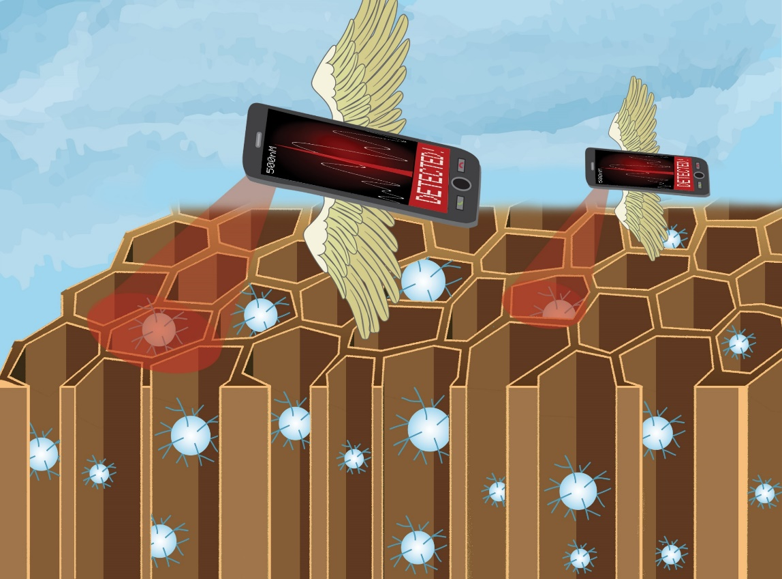Biosensors
Porous Silicon on Paper
Porous silicon (PSi) thin films are widely studied for label-free optical biosensing, but face limitations in response time and sensitivity due to poor mass transport. This work presents a solution using open-ended PSi membranes placed on paper substrates in a flow-through sensor setup. The paper acts as both structural support and a passive fluid drain, eliminating the need for pumps or microfluidics. Molecular binding within the PSi membrane alters its reflectance, enabling optical detection. The sensor demonstrates a clear concentration-dependent response to protein analytes. Key factors such as molecule interaction time and drying time are analyzed for their impact on sensitivity and speed. Overall, this PSi-on-paper system shows promise for affordable, rapid, and sensitive diagnostic testing.


Porous Silicon Based Biosensors
Microfluidic systems are often integrated with sensors to facilitate real-time molecular detection. In a typical microfluidics system, the sample solution flows over the active binding surface of a sensor in a micro-channel. For sensors based on nanoporous materials, the flux into an individual pore can be as slow as a few molecules per pore per second due to the high aspect ratio of the nanopores. As a result, most molecules are swept downstream in the channel without reacting with the porous sensing surface. In this work, we present for the first time a label-free, flow-through sensing platform based on open-ended PSi microcavity membranes that is compatible with integration in on-chip sensor arrays. This flow-through platform, allowing analyte solutions to pass through the pores, greatly improves analyte transport efficiency, especially for larger molecules, and reduces sensor response time.
![]()
Schematic representation of flow-over (left) and flow-through (right) porous silicon membrane structures.
Point of Care Diagnostics
Point-of-care (POC) testing is a fast-growing sector in the diagnostics market due to the convenience and low cost measurements. Biosensors are the crucial elements of POC diagnostics, which transform biomolecular or medical information into easily understandable readouts. Tests run using current technologies generally require high-cost instrumentation, strict sample preparation procedures, and well-trained personnel, which restrict their usage for POC applications. By using the built-in LED flash of a smartphone as the light source and the smartphone camera as the photon detector, we proposed a label-free porous silicon sensor that requires only a bandpass filter and a 3D printed box, and leverages the advantages of the high surface area sensor material, porous silicon, for the test chip. The biosensing system works by detecting the structural colour change of the porous silicon that results when target molecules are captured in the pores of the PSiM. The sensor features low cost and high sensitivity.

Photonic Crystal Based Sensors
Optically resonant structures with high quality factor (Q), small mode volume, and cascadable design have emerged as a promising platform for compact, highly sensitive, and highly accurate diagnostics tools in the medical, military, food, and environmental sectors. On-chip resonant photonic structures including ring resonators and multidimensional photonic crystal (PhC) sensors have been extensively researched on silicon-on-insulator (SOI) substrates for refractometric-based biosensing applications, but the bulk detection sensitivities are not competitive with respect to other commercial biosensors. Here we try to improve the detection sensitivity of on-chip PhC NB sensors by utilizing a porous silicon (PSi) substrate.
